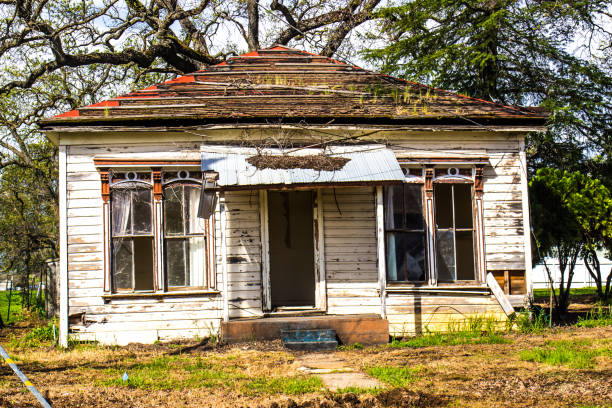How to Downsize Your Home for Retirement: 15 Downsizing Tips
Looking into how to downsize your home for retirement? it’s a wonderful accomplishment, and you’ve earned it. While downsizing can be a journey, there’s no need to fear – the following 15 tips can help you stay on track and make the most of your retirement.
When you begin the downsizing process will depend on your unique situation and priorities, but better understanding the basics can help you proceed with the confidence that comes from knowing you’re making well-considered decisions that support your best interests.
Table of Contents
Downsizing after retirement?
Whether you’re downsizing at 70 or are getting a jump on things and are downsizing prior to retirement, there are some points to keep in mind along the way. Downsizing your home in retirement can save you money, reduce your responsibilities in terms of keeping up your property, and free you up to enjoy life to the fullest, but making the right decisions for you along the way is key.
Should I downsize before retirement or is downsizing after retirement better?
When should seniors sell their home? The matter is a very personal one and is specific to the needs, goals, and preferences of the individuals involved. There are, however, universal tips that can help you carefully consider your situation and make the right decision for you. Retirement is your time to enjoy the fruits of your labor, and you’ll want to carefully weigh your options rather than making a decision in haste.
What are your goals for retirement downsizing?
The most important question to ask yourself relates to what your retirement goals are, and your answer should guide you in terms of what comes next. People have many reasons for considering downsizing, and prior to retirement is a great time to give the matter careful thought. The goals that most retirees focus on fall into several basic categories.
Financial goals
Many people consider the downsizing process in relation to financial goals. To begin, your income will probably decrease upon retirement, which makes saving money in relation to your home sound pretty good. A smaller home is likely to cost less overall, to have a lower mortgage (if you have a mortgage at all), to require less upkeep, and to incur lower property taxes – just to name a few. It’s no wonder that financial goals often take top billing when it comes to downsizing.
Lifestyle goals
There is also the matter of living life on your own terms to consider. When you downsize, you have a lot of options. For example, If you choose a retirement community, you can expect a lot of amenities that may allow you to enjoy the lifestyle you’re looking for. Additional options to consider include:
- The convenience of a town-home or condo
- The ease of living on only one floor
- The decreased responsibility of renting
- The health benefits of living in an area that bolsters your well-being
- The joy of living closer to your loved ones
Retirement is a great way to focus on what matters most to you.
Health Goals
As we age, there are mobility issues to consider, slip and fall concerns, and the matter of preserving our energy to focus on the things we love – rather than on taking care of a current home, that may be far too large for your current needs. Downsizing now to a place that supports your lifestyle as you age can also significantly extend your ability to continue living independently.
Family Goals
There was a time when families tended to stay in close proximity to one another even as the children grew up and started families of their own, but this is no longer the case. One of the primary reasons retirees make the decision to downsize is to live closer to loved ones, which often means enjoying their grandchildren more and simply remaining closer to family members.
Freedom Goals
There is no denying that remaining in a family home that you’ve lived in for years and years can weigh you down, and nothing lightens your load the way decluttering and moving to a smaller home can. Even if you stay in the same general location, downsizing offers a great opportunity to free yourself up to do what you want – when you want.
Pros and cons of downsizing your home for retirement
Just like anything else, there are pros and cons to downsizing your home for retirement, and keeping these in mind as you move forward is an excellent plan.
Pros
If you’re ready to downsize, there’s a lot to look forward to, including all the following:
- Downsizing almost universally translates to spending less and saving more.
- Moving to a new home can give you a new lease on life and allow you to truly embrace what retirement has to offer.
- Downsizing is a great option if you’re ready to become more mobile, which might mean spending more time with your children and loved ones – who may be far flung.
- Downsizing provides you with lots of options, and you set your sights on a home that checks all the boxes on your list of wants.
- Downsizing can free up a considerable amount of time in relation to housekeeping, lawn care, and home repairs – and that’s time you can spend doing what you want to do.
- Downsizing is a personal journey that can prove far more liberating and fulfilling than you may have even anticipated.
- Downsizing often offers more opportunities to connect with your community, which can include volunteering and other worthy pursuits.
If you’re considering the process of downsizing, you should know that it has a lot to recommend it.
Cons
When it comes to the downside of downsizing your home for retirement, most of the concerns are emotional in nature. It’s not just your house, it’s the place where you raised your children and made countless memories. Other factors that often make the con list include:
- It can be difficult to say goodbye to neighbors and friends you’ve made in the community.
- Moving is a lot of work, which translates to a lot of stress.
- While gathering and getting rid of your belongings can really lighten your load, you might be surprised by the tug of their sentimental value.
- A smaller home doesn’t mean less stress , lower utilities, less hassle, or even less expense in every instance – do you homework before taking the plunge
Downsizing can be a great way to boost your overall enjoyment of life, but making the right decisions for you in relation to your unique circumstances is paramount. If your current home meets all your current needs and is likely to continue fitting the bill, downsizing may not be a concern you need to fret over.
How to downsize your home for retirement
The best way to downsize for retirement begins by taking each step forward with intention and assessing your related needs in the process. Let’s take a closer look.
1. Make the right decision for you
The first step in the downsizing process is making the right decision for you – a decision that works for you on both a financial and emotional level. A good idea at this stage in the game is discussing your finances with a trusted financial advisor or financial planning professional to ensure that you’re on track financially.
The other half of the equation involves sharing your plans with your children and other close relatives who may be affected. While the decision is ultimately yours, having the loving support of those closest to you can make the process less daunting.
2. Determine the right time
You’re a homeowner who has made the decision to downsize, but you may not be sure whether downsizing before or after retirement is in your best interest. Downsizing prior to retirement allows you to take your time by slowly and methodically decreasing the contents of your home, finding the ideal location for you to land, carefully assessing your needs, and systematically determining what comes next. The flip side of the coin, however, is that you’ll also be working full time, and anything extra can be a lot.
There is also the matter of timing to consider. If your downsizing plans include a major move, it’s unlikely you’ll be able to accomplish this prior to retirement. This is yet another issue that must be made on a case-by-case basis.
3. Prepare your home for sale
You’ve done the soul searching and have come to the decision that you’re downsizing. Now comes the prep work. This can include all the following:
- Divvying up the contents of your attic and guest bedrooms to their respective owners, which likely means your children
- Donating all that excess stuff that you simply don’t need anymore
- Selling those items of value that family members aren’t interested in either online or to local collectors
4. Sell your home
You’ve made it this far, and now, it’s time to sell your home. If you go the traditional route of using a real estate agent, you can expect all the following:
- A lengthy process
- The need to make required home repairs
- The need to prepare your home for viewings and open houses
- The inconvenience of keeping your home viewing ready while being prepared to vacate the premises on a moment’s notice
- Hefty closing costs and a significant realtor commission that can take a serious bite out of your profits
This approach, however, is not your only option. Real estate investors pay cash for houses in as-is condition, which means there’s no need to make repairs, update your outdated kitchen and bathrooms, or pretty the place up for prospective buyers. At SoCal Home Buyers, we have a streamlined process that involves just a few easy steps and can put cash in your account in as few as 24 to 48 hours.
Downsizing smoothly requires scheduling flexibility, which we can offer. There’s no need to schlepp your belongings to a storage unit while you rearrange your life to accommodate your buyer – we honor your schedule. We buy houses for cash in California, and we proudly serve each of the following counties:
5. Find the right place for you
You are on this downsizing journey, and now it’s time to find the perfect landing pad for you to make the most of your retirement. This includes considering factors like the following:
- The ideal location and the cost of living associated, including housing costs
- The square footage and layout you’re looking for – many retirees are interested in living on one floor
- Any additional costs and fees that may apply, such as HOA fees
- Any special amenities you’re looking for
- Your priorities, which involves pinpointing what’s most important to you
Other tips for downsizing in retirement: 10 things to sell before you retire
One of the most difficult aspects of downsizing is doing exactly that – minimizing the amount of stuff you have to deal with. Fortunately, there are 10 tired-and-true tips that can help you sell or donate the things you don’t need.
1. Downsizing wardrobe after retirement
You have a specific job or career that requires a specific wardrobe, but once you’re officially retired, your clothing needs will be far less specific. This is a golden opportunity to pare down your wardrobe.
2. Getting rid of that storage unit
You’re downsizing, which means there is absolutely no need to hold on to the stuff in your storage unit. Divvy it up between your kids and family and donate or sell the rest – you’ll never regret it.
3. Letting go of old exercise equipment
If you have one piece of old exercise equipment – or many – that you simply don’t need, it’s time to sell or donate it. Exercise equipment takes up too much space not to be brutal when it comes to whether or not it makes the cut.
4. Cleaning out your kitchen
Most of us are astonished when we carefully consider the contents of our kitchens. In fact, multiple duplicates are common. Go through your kitchen, keep the best of the best, and let the rest go.
5. Cutting ties with your children’s art work
While the art projects your children created over the years are priceless, you can’t keep them all, and doing so can turn into a hoarder situation. Saving a few cherished items and taking pictures of the rest is generally the best policy.
6. Cancelling your children’s storage contract
If your children are storing things in your home, now is the right time to cancel that storage contract. If they really want the items, they’ll make room for them in their own lives, and if they don’t, its your license to donate or otherwise rid yourself of them.
7. Taking a deep dive into your paperwork
While it’s critical that you keep some paperwork, there is a whole lot of stuff you don’t need to concern yourself with. Most bills, statements, invoices, and transactions can be easily accessed online, and the same is true of those instructions and warranties you’ve been saving for years.
It should be noted, however, that the documents required for selling inherited property, which are important for estate planning purposes, and other official paperwork should be retained, and storing them in a safety deposit box is advised.
8. Letting go of furniture
You’re downsizing, which means you’re going to have less space to worry about and also means that you’re not going to need all that furniture – find it a good home by selling, donating, or giving it away.
9. Refusing to give in to the allure of books
If you have valuable editions of books, it’s one thing, but if you’ve kept every book you’ve ever read – or thought about reading – it’s quite another. Books are heavy, take up a lot of space, need to be dusted, and can drag you down in your retirement. And this is not to mention that they’re infinitely replaceable in electronic form. When you’re deciding which books to keep and which to unload, stay firm.
10. Taking the axe to holiday decor and knickknacks
You’ve lived in your home for many years, and if you don’t have a serious collection of holiday decor and knickknacks at this point, you’re well ahead of the game. The best way to divest yourself of these items is to keep only what you love and to let the rest go.
Our key takeaways on how to downsize for retirement
You’re not alone if you’re wondering how to downsize in retirement in the Southern California area. It’s a big job, but the experienced real estate investors at SoCal Home Buyers are at your service.
We take the complications out of selling your home just the way it is, and the speedy process ends with a cash offer that allows you to fully embrace your retirement that much sooner – without the kind of setbacks that are commonly associated with the traditional real estate market.
Here’s how it works:
- Give us a call at 951-331-3844—or fill out the short form below—to request your fair cash offer.
- Await our prompt response to discuss your property in greater detail and schedule a one-time inspection that allows us to offer the highest amount possible.
- At the time of the inspection, our in-house inspector will quote you a fair cash offer, and if you’re on board, you can consider your home sold!
- Choose your closing date, and leave the rest to us. You can choose payment via check or wire transfer. It simply doesn’t get any easier.










